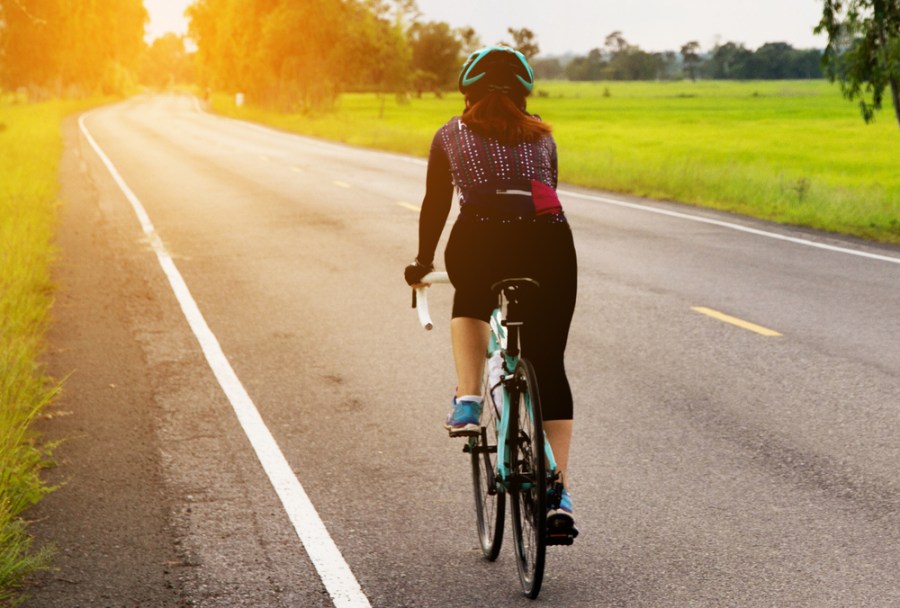Have you taken up cycling during lockdown? Keep it up and make sure it’s a pain-free experience with these top tips from Michelle Njagi, Senior Physiotherapist for Bupa Health Clinics.
Since social distancing measures were introduced, bike sales have soared. Cycling can be great for overall health, wellbeing as well as benefiting the environment. It’s a great, low impact alternative to running as it takes pressure off your joints.
If, like lots of people in the UK, you’ve recently returned to cycling, it’s worth taking into account that this may be the first time you’ve ridden a bike since you were a child. To make sure that riding is just as much fun as it was when you were younger, it’s important you take steps to prepare your body for your new hobby.
Getting in the right gear
You don’t have to buy a brand-new bike to get into cycling, but if yours has been sitting in the shed for a while, it’s definitely worth getting it checked over by a qualified mechanic before your first ride, if you can. They’ll be able to spot any signs of damage on the tyres and frame that could cause the bike to malfunction and injury to you.
Make sure you’ve got the basics to keep you safe while you’re out – that means working lights, an inner tube, wearing breathable clothes and a helmet that fits you properly.
It’s also important to make sure that the bike is set up correctly for your height. In particular, saddle height, which, if set-up correctly can have a big impact on pedalling efficiency and helps prevent injury. Make sure your saddle is at the right height with this simple test: sit on your bike with one foot on the pedal. If your saddle is at the right height, you should be able to point your foot to a vertical position (at 6 o’clock) with your knee fully straight. Adjust your seat’s height until you can do this and see if you feel a difference in your workout.
Don’t forget to warm up!
Though, mentally, you may feel like you’re ready to set off on a long bike ride, a proper warm-up helps to safeguard your body against any injuries that may happen during or after your cycle. Both beginners and more serious cyclists should always make sure they properly warm up for at least five minutes before pedalling off. You can do this by marching on the spot and doing simple stretches, then work up to star jumps and lunges to elevate your heart rate.
Fuel for the engine
What you eat before and after exercising can affect how you recover from exercise. We all know exercise burns calories, so you need to make sure you’re getting enough calories with the right to nutrients for your workout. Include starchy carbohydrates like wholemeal bread or brown pasta/rice in your diet for slow-release energy to power your muscles. Team your carbohydrates with some protein (like salmon eggs or beans), healthy fats (like walnuts or avocado) and vegetables to help build, recover and repair your muscles after exercise.
Drinking water plays a vital role in your post-workout recovery time, too – it helps your body to synthesize proteins for your muscles. Make sure you’re drinking at least eight glasses of water a day to keep your body functioning well, and drink around 230ml before you set off, then another 230ml for every 15 minutes you’re cycling.
Remember to cool down
Cooling down is just as important as warming up. Spend at least five minutes slowly moving and stretching your body to gradually bringing your breathing and heart rate down. By doing this, you’re again protecting your body from dizziness, aches and pains such as muscle cramps. The longer you can hold your stretches, the more chance you have of improving your overall flexibility – try to aim to keep the hold for at least 30 seconds, as this allows your muscles to fully lengthen. Try and avoid bouncing in the stretch as this can lead to injury.
Think about your technique
When you’re enthusiastic about a new hobby, you may be tempted to push yourself, but frequent high-intensity workouts can leave you feeling sore and worn-out. From pulled muscles to saddle soreness – listen to your body. If anything’s negatively impacting the way you’re able to ride, have a think about what you can do to change that. Is there a particular set of muscles hurting you most after your workout, and could you stretch them more before and after your next ride? With practice, could you try to stand from your saddle every 10 to 15 minutes, so that your contact with the saddle is reduced.
Your posture on the bike is very important, too. If your back’s in a slumped position, this may cause irritation and pain so it’s important to try and focus on keeping a straight position by gently engaging your core. The height of your handlebars will also affect this so tweak them until you’re in a position where you can keep your back straight. Your knees should also be pointing straight forwards. If you notice them rolling in, over time this can lead to knee injuries.
Remember that training takes time, strength and perseverance so your body can adapt. Know your limits; start smaller and increase your workout in phases so you’re prepared for your fun new hobby.








